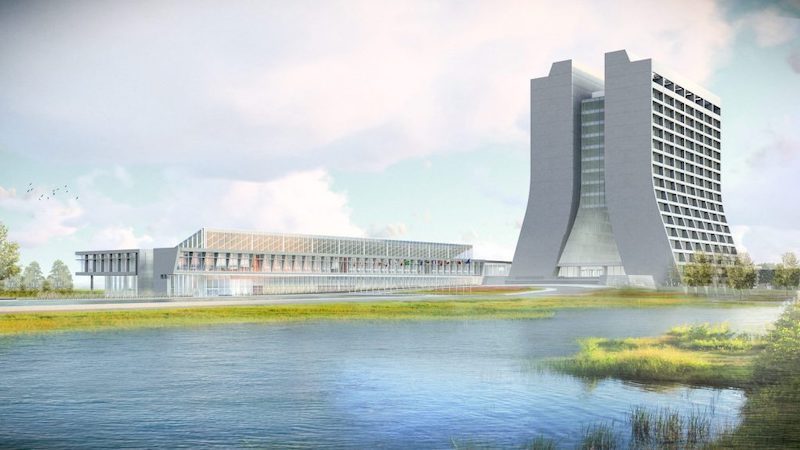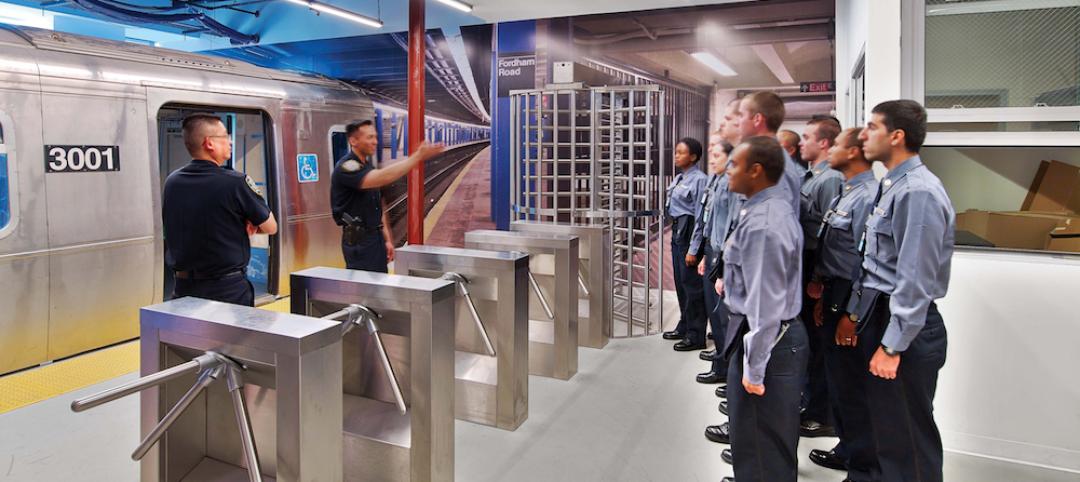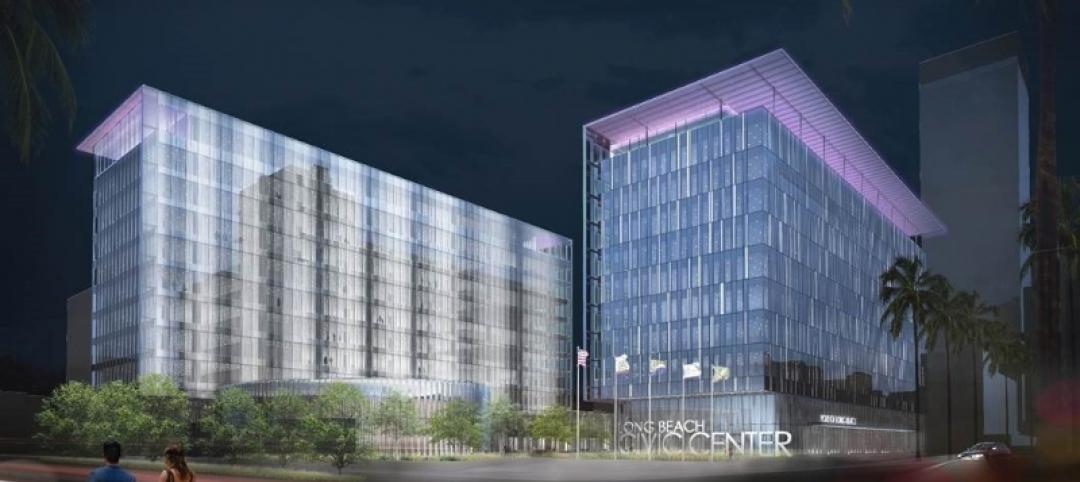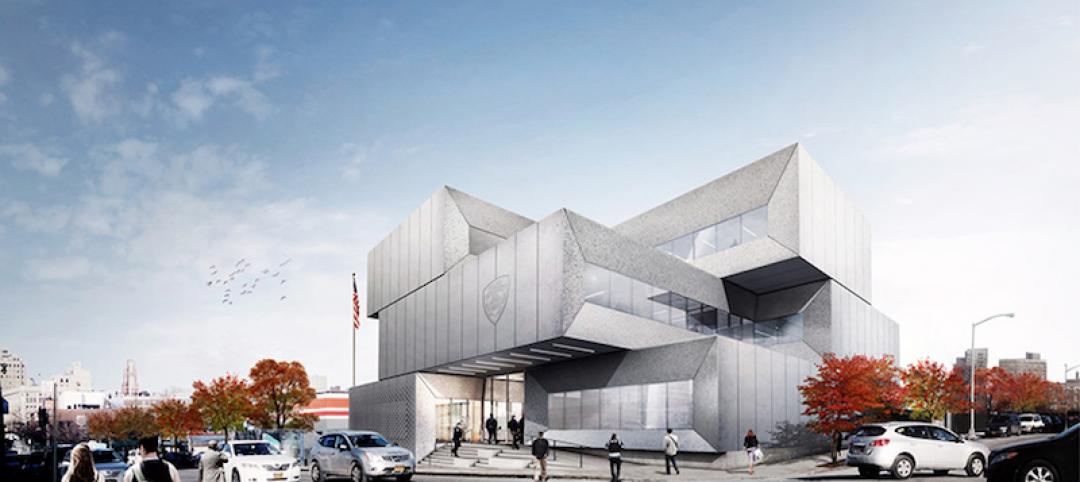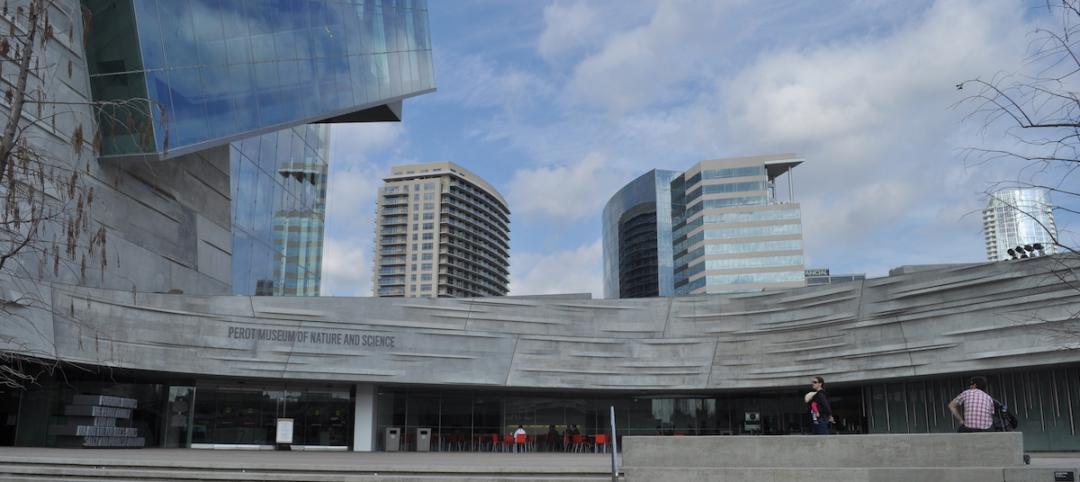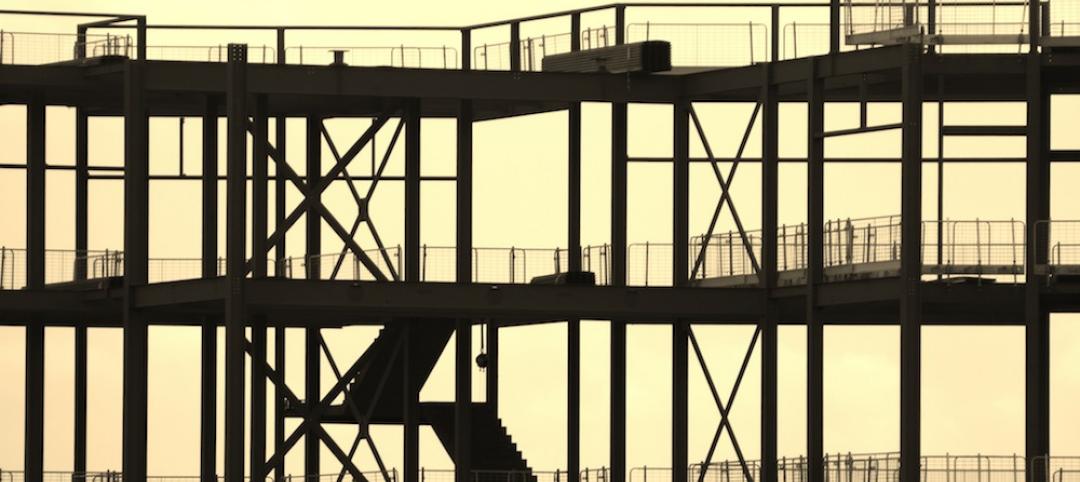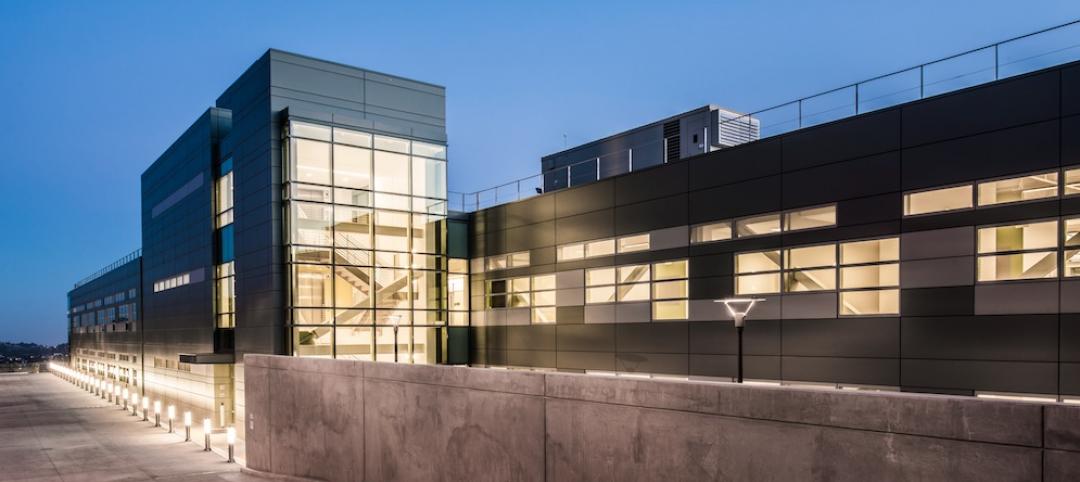This fall, construction is scheduled to begin on the Integrated Engineering Research Center (IERC), an $86 million, 85,000-sf infrastructure project on the 6,800-acre campus of the Fermi National Accelerator Laboratory in Batavia, Ill., the nation’s premier particle physics lab.
IERC has been in the works since the summer of 2015, and at one time was conceived as a 100,000-sf building that dedicated two of its three floors to office space. That concept changed after a team comprised of Arup and Perkins and Will won a design competition that Fermilab conducted in 2017.
That team’s concept scales back the building to two floors, and includes more lab space. What emerges are “hybrid labs” that, essentially, remove the walls separating labs and offices for the purposes of colocation and collaboration. There are two hybrid zones on the ground floor, in one big open area “that just about anyone can walk through,” explains Aaron Tabares, a Senior Electrical Engineer for Arup’s offices in Chicago, which provides the SE, MEP, F/LS, AV, and IT services to the IERC project.
(He notes, parenthetically, that Arup’s acoustics expertise came in handy to help design these hybrids with quiet features for researchers when needed.)
Brian Rubik, SE, Fermilab’s project manager, adds that Perkins and Will, the designer and AOR on the IERC project, championed bringing more natural light into the new building, whose sloped roof includes clerestories that angle toward the campus’s iconic Wilson Hall.
Rubik notes that IERC’s mechanicals were moved to the center of its upper floor so that more offices could be positioned on the interior perimeter to receive more light. Fermilab calls the hallways and windows around the perimeter of the ground floor “science on display,” says Rubik.
“A lot of the building’s systems are discrete,” adds Tabares. “The form of the building considered just about every angle for the occupants.”
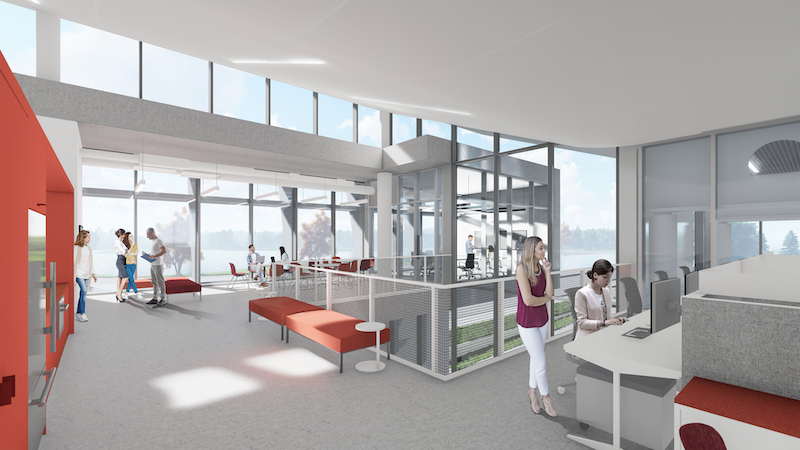
Open, collaborative spaces, designed modularly for maximum flexibility, are IERC's hallmarks.
Keeping the mechanicals off the roof will present a more aesthetically pleasing appearance for a building that, when it’s completed in October 2022, will be a centerpiece of Fermilab’s campus. Prominently featured in IERC’s design is its glassed-in Argon Cube, located at the northeast corner of the building. The Argon Cube is an R&D space related to Liquid Argon (Lar) in support of the DUNE (Deep Underground Neutrino Experiment) and the LBNF (Long Neutrino Baseline Facility). It houses the Liquid Argon cryostat vessel, where Fermilab will test the detector components and advance study related to using Lar cryogenics in filtration and air contamination recovery.
A TIGHT JOBSITE
This project presented an array of physical challenges to the Building Team, which includes Mortenson (GC/CM) and Terra Engineering (CE).
“Terra’s role was especially important, as there were a lot of utilities running into this building,” says Thomas Mozina, Design Principal for Perkins and Will, whom BD+C interviewed last week with Adana Johns, AIA, LEED AP, the firm’s Associate Principal and Science + Technology Practice Leader.
Mortenson has been prepping IERC’s site, adjacent to Wilson Hall, since July 2019. The location is constrained by the formal “horseshoe” entry drive and a raised (8- to 10-ft-tall) berm that had been a radiation shield for a 1.25-mile-diameter Tevatron beam line, the main ring around the particle accelerator, which was deactivated in 2011. Tabares says that excavation was dictated by another, active particle accelerator beam. An electrical artery outside of the building also needed to be relocated.
“We’re kind of jammed into there,” says Rubik about the Center’s location.
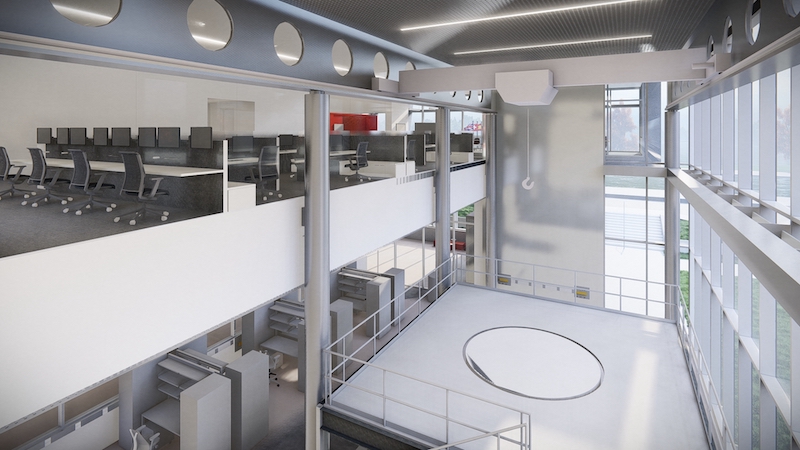
The Argon Cube, enclosed in glass for exterior visibility, is an example of IERC's “science on display.”
MODULAR DESIGN FOR FLEXIBILITY
Inside the IERC, Perkins and Will designed office and lab space “with a certain sense of modularity,” says Mozina, in order to provide Fermilab with the flexibility it needs as research evolves. (He describes the design as a kit of parts, and Johns doesn’t think the client will require many more changes in that design, “having already gone through so many iterations in the planning process.”)
Wilson Hall, which dates back to 1971, has 800 employees. It will connect with IERC at the former’s ground floor and 16-atory atrium level via a 20-ft-long enclosed runway.
Related Stories
Building Team Awards | May 27, 2016
Big police academy trains thousands of New York's finest
The Police Training Academy in Queens, N.Y., consists of a 480,000-sf academic/administration building and a 240,000-sf physical training facility, linked by an aerial pedestrian bridge.
Government Buildings | Apr 22, 2016
Public-private partnership used to fund Long Beach Civic Center Project
Arup served as a lead advisor and oversaw financial, commercial, real estate, design, engineering, and cost consulting.
Architects | Mar 16, 2016
PGAL acquires Dallas-based Pro Forma Architecture
The merger adds a firm that has specialized in municipal projects.
Industry Research | Feb 22, 2016
8 of the most interesting trends from Gensler’s Design Forecast 2016
Technology is running wild in Gensler’s 2016 forecast, as things like virtual reality, "smart" buildings and products, and fully connected online and offline worlds are making their presence felt throughout many of the future's top trends.
Government Buildings | Feb 4, 2016
Bronx police station design revealed by Bjarke Ingels Group
The blocky, modern design is meant to convey accessibility and public service.
Government Buildings | Jan 26, 2016
California governor proposes $1.5 billion to repair, replace state buildings
The program would include two new state office buildings in Sacramento.
Architects | Jan 15, 2016
Best in Architecture: 18 projects named AIA Institute Honor Award winners
Morphosis' Perot Museum and Studio Gang's WMS Boathouse are among the projects to win AIA's highest honor for architecture.
| Jan 14, 2016
How to succeed with EIFS: exterior insulation and finish systems
This AIA CES Discovery course discusses the six elements of an EIFS wall assembly; common EIFS failures and how to prevent them; and EIFS and sustainability.
Government Buildings | Dec 29, 2015
Federal appropriations bill will boost construction activity in 2016
$1.1 trillion spending package includes tripling of GSA’s construction budget.
Government Buildings | Dec 18, 2015
Sustainable design is the only option for public-sector clients
Government projects that feature sustainable practices like high-efficiency LED lighting, improved HVAC systems, and rooftop solar arrays are no longer the exception.


